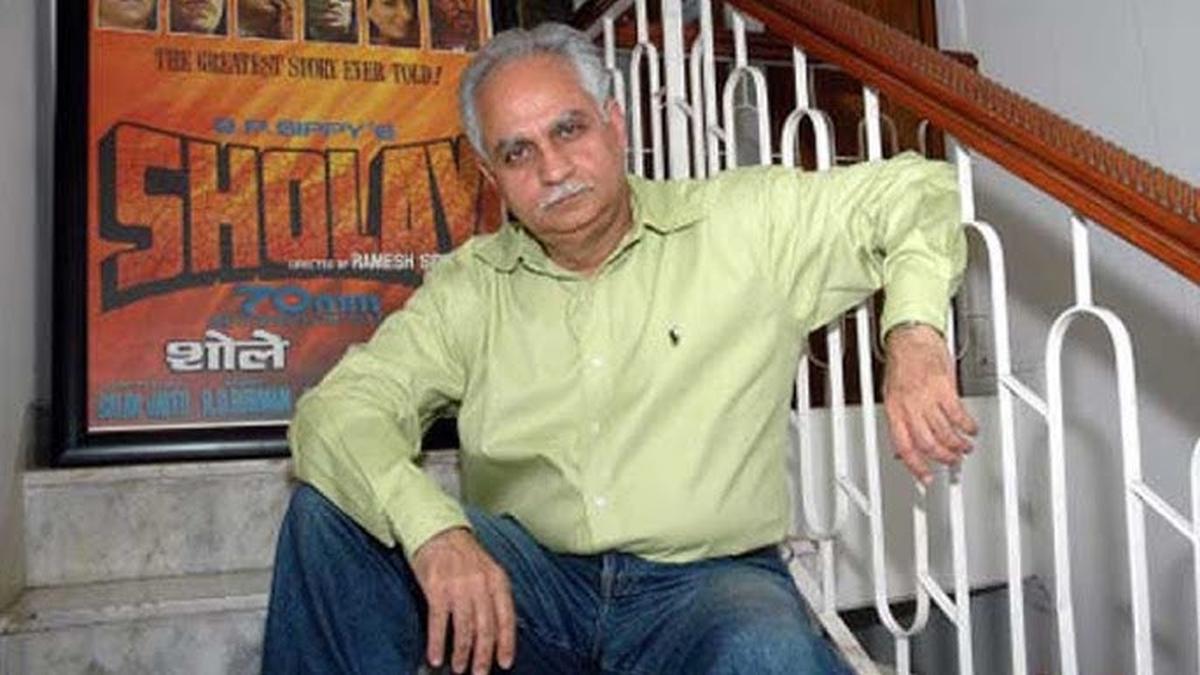
(From left) G.P. Sippy, Dharmendra, Ramesh Sippy, Sanjeev Kumar, Amitabh Bachchan and Amjad Khan
| Photo Credit: Special Arrangment
Barely 50 days after the Emergency was declared, on August 15, 1975, a different kind of liberation unfolded on screen. It was the day Sholay released.
Building on the successes of his earlier hits Andaz and Seeta Aur Geeta, director Ramesh Sippy, then in his late 20s, proved himself not only as a cinematic storyteller but also a technological-visionary and marketing genius. He fused a narrative, star power, technology and marketing into one grand spectacle.
Sholaypioneered a series of firsts — it introduced Indians to the grandeur of 70mm screens and the psychological punch of stereophonic sound that left the audience in awe. Until 1975, Indian cinema lived in the 35mm world with mono sound — heroes appeared in modest frames, their voices carried through crackling single speakers. It also launched cinema’s boldest marketing stroke: a dialogue disc that spilled out from theatres into drawing rooms and streets, transforming homes into mini-audio theatres and making Gabbar Singh’s lines national catchphrases. No Indian film had attempted this before. But Sholay’s dialogues were so powerful that pressing them on vinyls turned out to be pure genius. People re-watched the film multiple times just to see the dialogues come alive on a giant screen. It set in motion a technological evolution — from Dolby Stereo in the 1990s to DTS and multiplexes in the 2000s; from digital projection and IMAX in the 2010s to Dolby Atmos, 4DX, and VR in the 2020s.

Director Ramesh Sippy fused a narrative, star power, technology and marketing into one grand spectacle.
| Photo Credit:
Special Arrangement
To understand the unprecedented impact of Sholay, one must also recall Indian media in 1975. Television was still a novelty. Doordarshan was the country’s only broadcaster (limited to metro cities only) and programming was restricted to just a few hours each day — mostly news, educational content and occasional entertainment. All TV sets were black-and-white. Video cassette players (VCRs) and home video culture were virtually absent in 1975, entering Indian households only in the late 1970s and early 1980s through expensive imports. Radio remained popular but was dominated by news bulletins and film music, not full-fledged cinematic content. In such a limited entertainment landscape, cinema was the undisputed mass medium.
But Indian theatres were not ready for Sholay. Most were giant single-screens, designed to pack in numbers, not deliver nuance. Their mono speakers cracked under the strain of stereophonic sound — some even gave way during opening weekends. Projectors designed for 35mm prints could not handle the 70mm grandeur. Projectionists scrambled, importing 70mm machines, rewiring sound systems and even restructuring halls.
In scale and impact, Sholay brought to Indian audiences what Hollywood classics such as Ben-Hur and Lawrence of Arabia had already delivered and, remarkably, it did so two years beforeStar Wars(1977) redefined visual spectacle in Hollywood.
Sholay proved that technology and storytelling must fuse to create an experience. Even at 50, Sholay is more than just a ground-breaking blockbuster, it compelled Indian cinema to evolve.
Published – August 29, 2025 06:04 pm IST





















